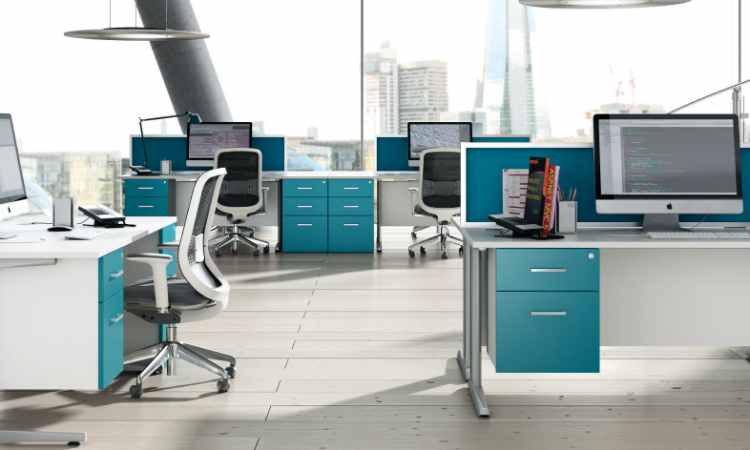Creating a productive and comfortable workspace is essential for any successful business. The right office furniture not only enhances the aesthetic appeal of your workspace but also contributes to the efficiency and well-being of your employees. In this guide, we’ll explore the key factors to consider when choosing office furniture and highlight some must-have pieces for a modern, productive office environment.
1. Assess Your Needs
Before diving into the world of office furniture, it’s crucial to assess your needs:
- Number of Employees: Consider how many employees you have and their specific roles. This will help determine the types and quantities of furniture required.
- Office Space: Measure your office space to understand the layout and ensure the furniture fits comfortably without overcrowding.
- Budget: Establish a budget to guide your choices and avoid overspending.
2. Prioritize Ergonomics
Ergonomics plays a vital role in employee productivity and health. Invest in ergonomic furniture to reduce the risk of musculoskeletal issues and improve overall comfort.
- Ergonomic Chairs: Look for chairs with adjustable height, lumbar support, and comfortable cushioning. Employees spend long hours sitting, so a good chair is a worthwhile investment.
- Adjustable Desks: Consider sit-stand desks that allow employees to alternate between sitting and standing throughout the day, promoting better posture and reducing fatigue.
3. Focus on Functionality
Functionality is key to an efficient workspace. Choose furniture that meets your specific needs and enhances productivity.
- Desks: Opt for desks with ample workspace and storage options. L-shaped desks or corner desks can maximize space.
- Storage Solutions: Incorporate filing cabinets, shelves, and storage units to keep the office organized and clutter-free.
- Conference Tables: For meeting rooms, invest in durable conference tables that accommodate your team comfortably.
4. Embrace Technology Integration
Modern offices are heavily reliant on technology. Choose furniture that supports and integrates technology seamlessly.
- Cable Management: Desks with built-in cable management systems keep cords organized and reduce clutter.
- Charging Stations: Incorporate charging stations or power outlets within desks and tables for easy access to power.
5. Reflect Your Brand and Culture
Your office furniture should reflect your brand identity and company culture. It sets the tone for your workspace and can leave a lasting impression on clients and visitors.
- Design and Style: Choose furniture that aligns with your brand’s aesthetics. Whether it’s modern, traditional, or eclectic, consistency in design creates a cohesive look.
- Color Scheme: Incorporate your brand colors into the furniture to reinforce your brand identity.
6. Promote Collaboration and Flexibility
A dynamic workspace fosters collaboration and adaptability. Create spaces that encourage teamwork and can be easily reconfigured.
- Modular Furniture: Modular desks and seating can be rearranged to suit different tasks and team sizes.
- Breakout Areas: Designate areas with comfortable seating for informal meetings and brainstorming sessions.
7. Sustainability Matters
Sustainable furniture choices reflect your commitment to environmental responsibility. Look for eco-friendly options that minimize your carbon footprint.
- Recycled Materials: Opt for furniture made from recycled or sustainably sourced materials.
- Certifications: Choose furniture with certifications like GREENGUARD or FSC, indicating environmentally responsible manufacturing processes.
Must-Have Office Furniture Pieces
Here are some essential office furniture pieces to consider for a well-rounded workspace:
- Ergonomic Chairs: Invest in high-quality, adjustable chairs for every employee.
- Desks: Choose spacious desks with storage options and cable management.
- Conference Tables: Durable and functional tables for meeting rooms.
- Storage Units: Filing cabinets, shelves, and storage units for organization.
- Breakout Furniture: Comfortable seating and tables for informal areas.
- Reception Furniture: Stylish and welcoming furniture for your reception area.
Conclusion
Selecting the right office furniture is a critical step in creating a productive, comfortable, and aesthetically pleasing workspace. By prioritizing ergonomics, functionality, and design, you can enhance your office environment and contribute to the well-being and efficiency of your employees. Remember to assess your needs, embrace technology, reflect your brand, promote collaboration, and consider sustainability in your choices. With these tips in mind, you’re well on your way to designing an office that inspires productivity and success.
